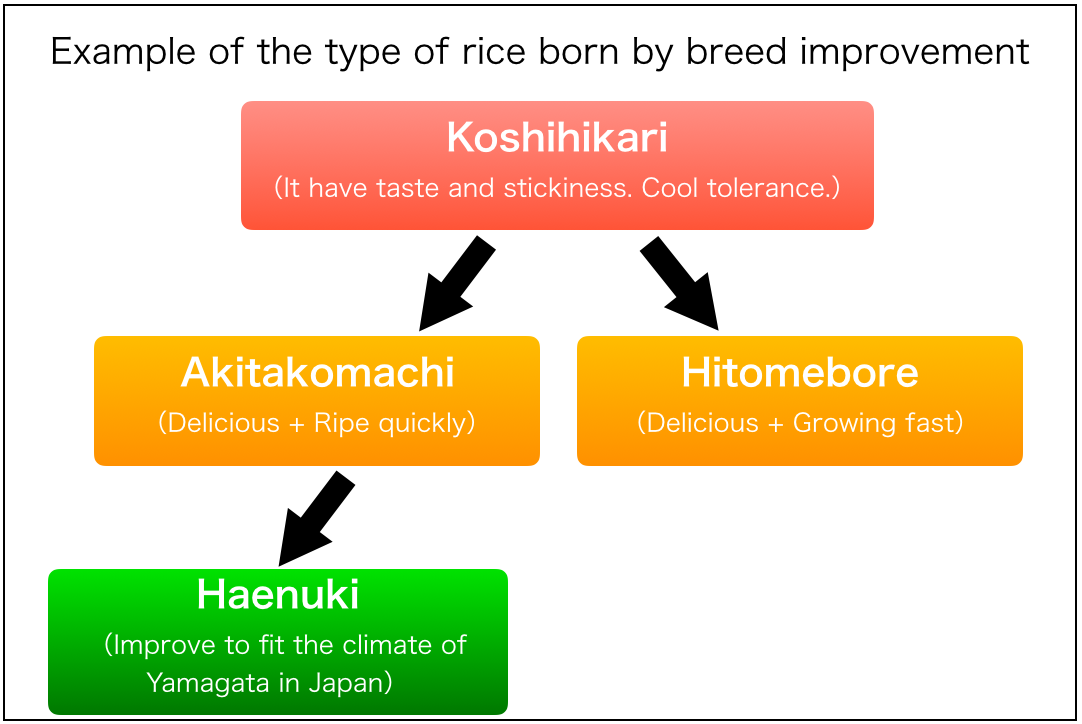Specific Example 1 Wild Boar
First of all, let's compare the wild boar and the pig.

You can see that the pig is suitable for livestock in the length of the fuselage and the period until it becomes an adult.
From wild boar to pig by breed improvement
Because the bones of the wild boar has been excavated from the ruins of various places in Japan, I know that wild boar was eaten in Japan from the ancient stone age.
I do not know clearly when the Japanese domesticated the wild boar, but it was not that the migrants who came to Japan from the continent by the year CE 200 to 600 conveyed the technique of keeping the wild boar It is said that.
Why did wild boar become a pig?
In the old days, originally wild wild boars were made food through hunting and collection. The meat of the boar seemed delicious, seems to have been actively hunted.
However, if you take too much, the number of wild boars will decrease. Therefore, human beings artificially mated the wild boars and thought of securing stable food.
It is thought that because the man was easy to handle, it resulted in domestication due to such reasons that the boar was omnivorous and easy to adapt to the environment.
However, there was also a problem. As you know, the wild boar is fierce and powerful, and it was difficult to keep it as it was.
Humans then married quiet wild boars and decided to hand over the ferocious wild boar. In the process, wild boars had become pigs after many years.
Specific Example 2 Rice
If you are a Japanese, you've always eaten "rice". There are various kinds of rice, such as Akitakomachi, Koshihikari, Hitomebore, Yumepirika ... and so on.
Why is there such a type, because it was made by breed improvement.
How did the breed improvement of rice
One is 'fight with nature'.
Japan is long in the north and south, there are large mountain ranges in the center, climate and sunshine hours are vastly different due to the influence of the seasonal wind from Southeast Asia. Therefore, varieties suitable for each region such as climate and sunshine hours were developed.
Rice originally like tropical climate. However, depending on the year, the temperature may not rise in the summer. Then, rice may not grow well.It is 「
Cold damage」
In the past history, Japanese people have suffered repeatedly from cold weather. The "Great Famine of Tian Ming" that occurred in the Edo era, recently the "rice fighting in Heisei" that occurred in 1993, is caused by this cold damage caused rice not growing enough.In this way, making a
"cold-resistant rice" was also a Japanese wish.
With the achievement of the Meiji Restoration, modernization has progressed, while steady supply of food is required, the breed improvement of rice has also progressed.Once in the 20th century,
artificial breeding technology was also developed, more "cold-tolerant rice" was made more than collection of rice which is strong against the cold and repeating natural breeding is.
The second is pursuing "better taste".
At the same time as adapting to changes in the environment, moves to pursue better taste have been done in parallel. For example, "Japonica rice" which is one of rice varieties and "Indica rice" have the following differences.

In Japan traditionally "Japonica rice" was growing, so it was not accepted the crisp texture and unique smell of "Indica rice"
Sticky texture and moderate Flavor is now required.
So, from that point of view, we repeatedly improved breeds to make "
delicious rice .
Representative rice varieties
Through this kind of history, now in Japan various varieties are distributed as goods. Here, I will introduce representative varieties familiar to you all.

Thus, the rice that we are eating now is
It's a long time spent making varieties and overcoming things.



 Thus, the rice that we are eating now is
Thus, the rice that we are eating now is 
